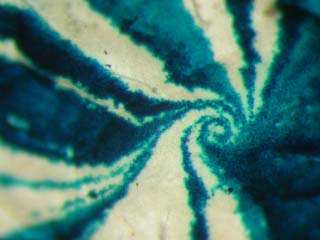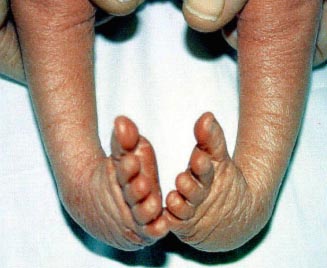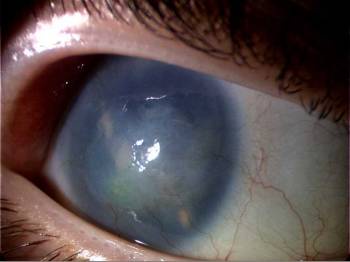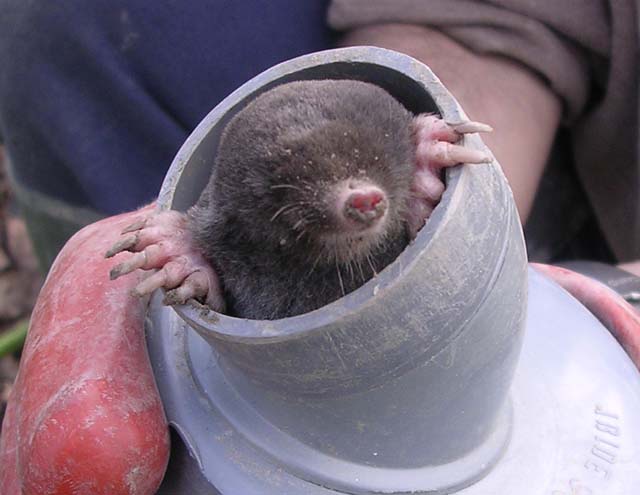
BA Natural Sciences (Cantab. 1991), MA (Cantab. 1994), PhD (Edinburgh 1996)
Personal Chair
- Email Address
- m.collinson@abdn.ac.uk
- Office Address
Room 4.37, Institute of Medical Sciences, Foresterhill, Aberdeen AB25 2ZD
- School/Department
- School of Medicine, Medical Sciences and Nutrition
Biography
J. Martin Collinson
Graduated in Natural Sciences (Genetics) from Fitzwilliam College, University of Cambridge, in 1991. Obtained a PhD at the University of Edinburgh, working in the MRC Human Genetics Unit studying the roles of homeobox gene family members (Msx genes) in vertebrate embryological development.
Postdoctoral positions at the University of Edinburgh 1996-2002, studying the roles of cell adhesion molecules (Neurofascin) and transcription factors (Pax6) in vertebrate development and disease.
Appointed Lecturer at Aberdeen University, 2002.
Senior Lecturer from October 2005. Reader 2008. Personal Chair 2012
Vice-chair of the Editorial Board of the journal British Birds.
Former Chair of the British Ornithologists’ Union Records Committee
FOR BIRD/DNA enquiries, contact m.collinson@abdn.ac.uk
External Memberships
MEMBERSHIP OF PROFESSIONAL ORGANISATIONS
- British Society for Developmental Biology
- Genetics Society
- Former Chair of the BOU records Committee and Convenor of the Taxonomic Committee
EDITORIAL BOARD MEMBERSHIP
- Ibis 2009 - present
- British Birds 1998 - present
Research Overview
The major foci of work in the lab are:
THE GENETIC BASIS OF HUMAN BIRTH ABNORMALITIES AND DEGENERATIVE DISEASE
STEM CELL BIOLOGY IN HUMAN DEVELOPMENT AND DISEASE
We study the genetic basis of normal embryonic development (mostly eyes and limbs) and the processes that can go wrong in humans. We also study stem cell activity in adults, focusing on degenerative disease and fertility problems.
1) The development and evolution of eyes. There are several projects on the go.
a) The roles of a transcription factor, Pax6, in eye development and disease . We examine how mutations in Pax6 change the cell surface properties of mutant cells, and how this may impact on the eye.
Patients with mutations in the PAX6 gene develop multiple eye abnormalities, including any or all of: aniridia (absence of iris), corneal opacity (aniridia-related keratopathy), cataract (lens clouding), glaucoma and long-term retinal degeneration. We are interested in developing new therapeutic strategies
Figure 1: The eye of a PAX6+/- aniridic patient (photograph kindly provided by Dr K, Ramaesh, University of Edinburgh). Note the corneal opacity associated with vascularisation.
b) The development of eyes in true moles (Talpa). Moles live most of their lives underground and over evolutionary time we expect their eyes to degenerate. We study the Iberian Mole Talpa occidentalis, in which the eyes are permanently closed, and determine how the genetic pathways that underlie eye development are breaking down in this species.
Figure 2: An adult Iberian Mole
2) The genetic control of axon guidance and epithelial cell migration. What pushes a cell or a growth cone from point A to point B? We examine the relative contribution of chemical and contact mediated guidance cues in vivo.

Figure 3. Swirling patterns of cell migration in the corneal epithelium, visualised in eyes that are mosaic for LacZ expression.
3) The genetics and etiology of Congenital Talipes Equinovarus (clubfoot)
We study the genetic and environmental factors that underlie clubfoot - an extremely common birth abnormality (1 in 500 babies) for which virtually nothing is clear about the causes.

Figure 4. Human bilateral clubfoot.
28th August 2011 - Interview with the Naked Scientists about the clubfoot project - see
http://www.thenakedscientists.com/HTML/content/interviews/interview/1784/
POTENTIAL PHD STUDENT?
We are looking for motivated, funded PhD students for studies in any of the above fields, e.g.
1) Genetics and molecular biology of motor neurone development and disease
2) Eye Evolution
3) Control of cell migration and wound healing
4) Genetics of human disease
5) Adult Stem Cells
Research Areas

Biological and Environmental Sciences
Biomedical Sciences
Research Specialisms
- Genetics
Our research specialisms are based on the Higher Education Classification of Subjects (HECoS) which is HESA open data, published under the Creative Commons Attribution 4.0 International licence.
Funding and Grants
MRC Principal Applicant. The genetic basis of clubfoot. £515,000 from October 2008
BBSRC Principal Applicant – coholders Dr Ann Rajnicek (Univ of Aberdeen), Prof Min Zhao (UC Irvine), Prof Colin McCaig (Univ of Aberdeen) The genetic control of epithelial cell migration and wound healing physiology £643,000 from February 2007
WELLCOME TRUST Corneal dysgenesis in the Pax6-mutant mouse – shoddy workmanship or sabotage? £245,000 from 1/9/04.
Dr James Alexander Mearns Trust Molecular basis of gene dosage effects of Pax6 mutants £51,660 from 01/10/07.
NHS GRAMPIAN ENDOWMENT FUND Vascularisation of the cornea £2688 from 01/04/07
NEWLIFE (Birth Defects Foundation) Aetiology and therapy of congenital corneal opacity £80,000 from July 2005
Teaching Responsibilities
TEACHING - BSc Programmes in Biomedical Sciences, Genetics, Human Embryology and Developmental Biology.
Human Embryology and Developmental Biology Degrees at the University of Aberdeen
The degrees are suitable for students wanting to learn about embryology, stem cells, bioengineering, reproductive biology, wound healing, evolution and cancer. Graduates can move on to jobs in academic and commercial jobs in embryology, clinical genetics, molecular biology and many biomedical fields.
'T-Club' - the Developmental Biology newsletter for University of Aberdeen.TClubDec12.pdf
Are you thinking about a degree in Developmental biology? Have a look at this.
Page 1 of 10 Results 1 to 10 of 99
Spiral-eyes: A soft active matter model of in vivo corneal epithelial cell migration
Kostanjevec, K., Sknepnek, R., Collinson, J. M., Henkes, S.eLifeContributions to Journals: Articles- [ONLINE] DOI: https://doi.org/10.7554/eLife.106061
Identification of lens-regulated genes driving anterior eye development
Murcia-Belmonte, V., Liu, Y., Shamsi, S., Shaw, S., Collie-Duguid, E., Herrera, E., Collinson, J., Vargesson, N., Erskine, L.Developmental Biology, vol. 520, pp. 91-107Contributions to Journals: ArticlesWhat is John Latham’s Rose-fronted Parrot?
Wilson, J. J., Fisher, C., Senfeld, T., Collinson, J. M.Bulletin of the British Ornithologists' Club, vol. 143, no. 4, pp. 559-563Contributions to Journals: ArticlesIntegrating orientation mechanisms, adrenocortical activity, and endurance flight in vagrancy behaviour
Snell, K. R. S., Young, R. C., Krause, J. S., Collinson, J. M., Wingfield, J. C., Thorup, K.Scientific Reports, vol. 12, no. 1, 22104Contributions to Journals: ArticlesFirst genetic data for the critically endangered Cuban endemic Zapata Rail Cyanolimnas cerverai, and the taxonomic implications
Brown, A. F., Lawrie, Y., Shannon, T. J., Collinson, J. M., Kirwan, G. M., Kirkconnell, A., Stervander, M.Journal of Ornithology, vol. 163, no. 4, pp. 945-952Contributions to Journals: ArticlesThe tangled nomenclatural history of Haplopelia forbesi Salvadori, 1904: Were Forbes and Robinson right all along?
Wilson, J. J., Fisher, C. T., Senfeld, T., Shannon, T. J., Collinson, J. M.Bulletin of the British Ornithologists' Club, vol. 142, no. 1, pp. 131-137Contributions to Journals: ArticlesPathophysiology of aniridia-associated keratopathy: developmental aspects and unanswered questions
Latta, L., Figueiredo, F. C., Ashery-Padan, R., Collinson, J., Daniels, J., Ferrari, S., Szentmáry, N., Solá, S., Shalom-Feuerstein, R., Lako, M., Xapelli, S., Aberdam, D., Lagali, N.The Ocular Surface, vol. 22, pp. 245-266Contributions to Journals: ArticlesSystematic placement of the bee hummingbird (mellisuga helenae) (aves: Trochilidae) and potential consequences for nomenclature of the mellisugini
Lawrie, Y., Shannon, T. J., Kirkconnell, A., Clark, C. J., Collinson, J. M., Kirwan, G. M.Ornitologia Neotropical, vol. 32, no. 1, pp. 45-50Contributions to Journals: ArticlesMorphological and genetic analyses reveal the first Mediterranean occurrence of American Herring Gull Larus smithsonianus
García Barcelona, S., Senfeld, T., Shannon, T., Collinson, J., Edelaar, P., Aldalur, A., Martín, G., García Mudarra, J. L., Juste, J.Revista catalana d'ornitologia = Catalan journal of ornithology, vol. 37, pp. 1-9Contributions to Journals: ArticlesWidespread tissue hypoxia dysregulates cell and metabolic pathways in SMA
Hernandez Gerez, E., Dall'angelo, S., Collinson, J. M., Fleming, I. N., Parson, S. H.Annals of Clinical and Translational Neurology, vol. 7, no. 9, pp. 1580-1593Contributions to Journals: Articles


